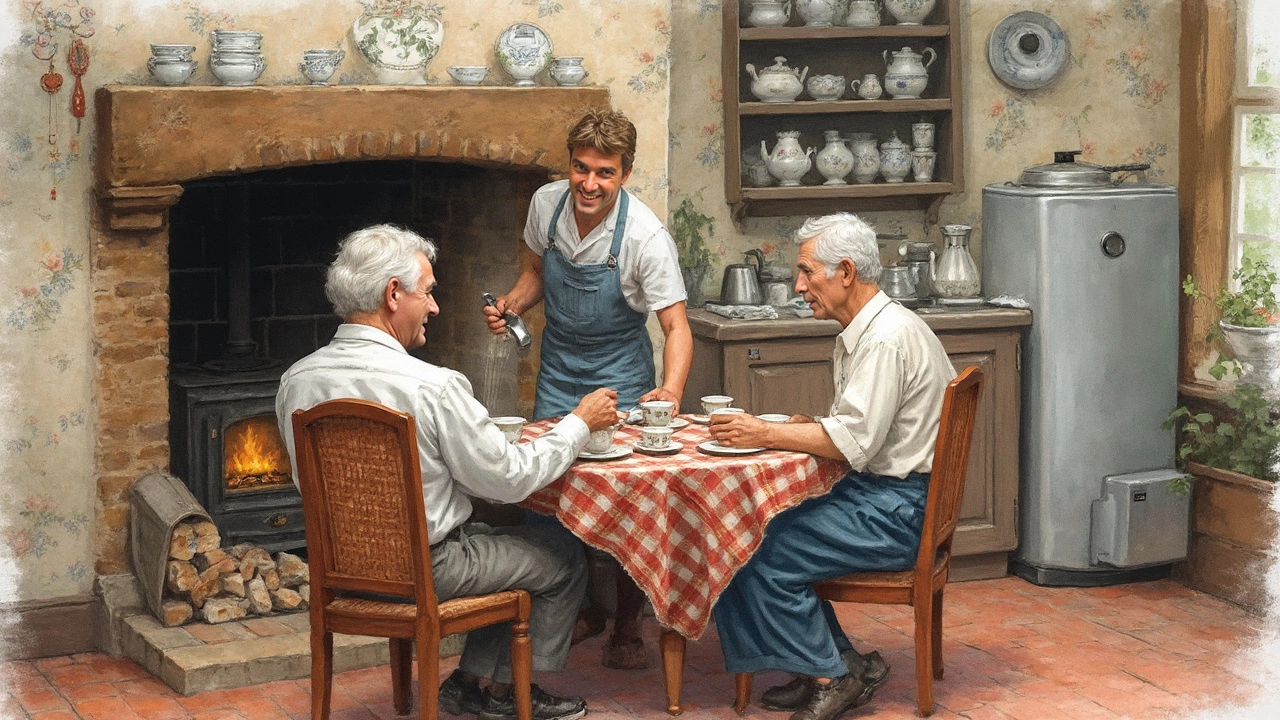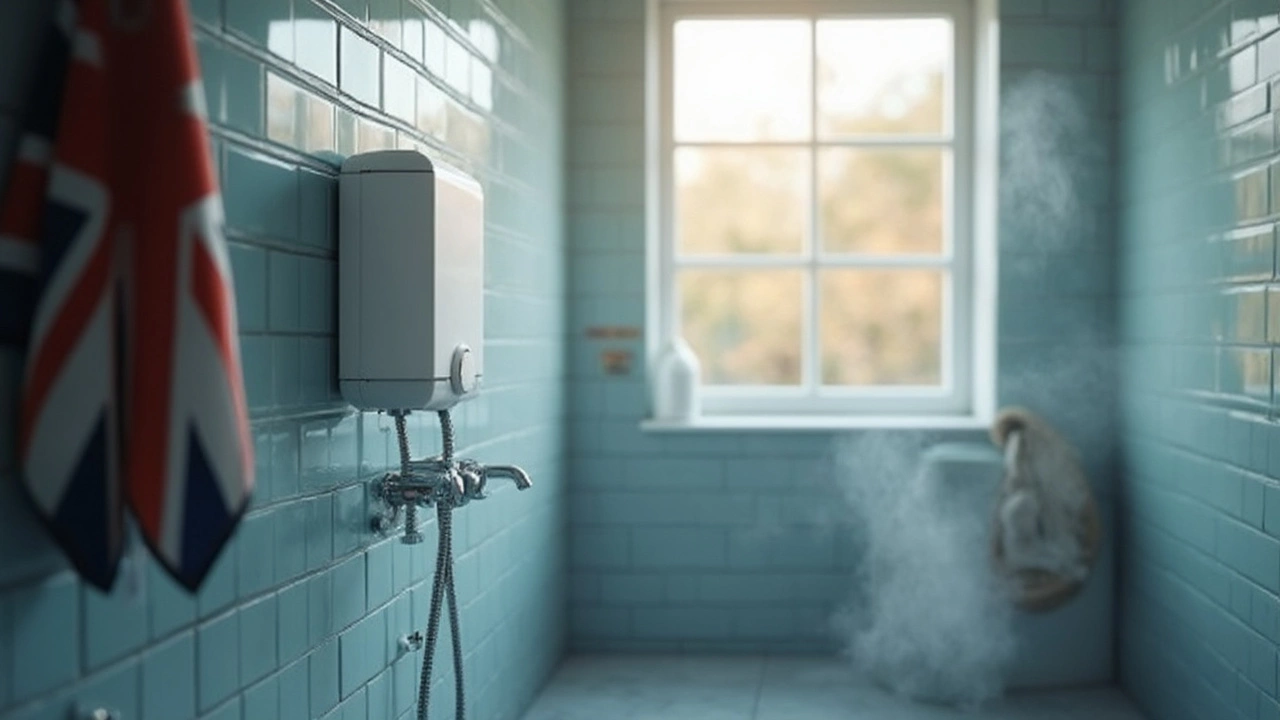Ever step into a shower expecting a warm embrace, only to be greeted with a frigid shock? Yeah, not fun. If your water heater could talk, it might give you a heads up, but since it's not quite that advanced, here are some telltale signs it's time to play detective. Let’s check it out.
First off, let's talk about water temperature. If you're dialing up hot water and it's lukewarm at best, something's fishy. Double-check your thermostat settings. Ideally, they should be around 120 degrees Fahrenheit. Anything less can mess with your relaxation game, anything more and you're flirting with scalding temperatures.
Now, let’s discuss leaks. Finding a puddle under your water heater isn’t like discovering extra fries at the bottom of the bag—it's not a bonus. Inspect the area around your heater for moisture or rust. Rust can tip you off about internal corrosion, a sneaky adversary. And, of course, if there's water, you'll need to address that fast.
- Recognizing the Signs of a Malfunctioning Water Heater
- Checking the Thermostat Settings
- Inspecting for Leaks or Rust
- Understanding the Importance of Water Temperature
- Testing Water Pressure and Flow
- When to Call a Professional
Recognizing the Signs of a Malfunctioning Water Heater
Is your water heater acting more like a rebellious teenager than a reliable appliance? Let’s explore some signs that yours might be taking an early retirement. Don't worry; it's all fixable, with a little savvy and possibly some expert help.
Temperature Troubles
Temperature discrepancies are usually a big red flag with your water heater. If you're cranking it to hot, but getting lukewarm at best, that’s a heads up. This can be due to anything from faulty thermostats to sediment build-up.
Strange Sounds
Water heaters shouldn't be the noisy neighbors of your home. Popping or cracking noises can indicate sediment or mineral build-up inside the tank. As the burner heats up, it gets trapped, resulting in sounds you definitely don’t want to hear during a midnight snack run.
Rust and Corrosion
Is there rust on the outside or rusty water coming out of your hot side tap? That's as bad as it sounds. Rust could mean the heater's lining is corroding, and it might be time for a change before you spring a leak.
Leaks, a No-Go
No one wants to find a miniature indoor pool beneath their heater. A leak, no matter how small, is always cause for concern. It's vital to address leaks immediately to avoid further damage and larger repair bills down the line.
Irregular Water Pressure
If you’re experiencing a weak water flow, it might be the build-up of mineral deposits over time. These deposits can interfere with heater efficiency and eventually compromise its lifespan.
The key takeaway? Your water heater might not be able to scream for help, but these signs are its best attempt at getting your attention. By tackling these issues early, you ensure the appliance’s efficiency and contribute to energy conservation.
Checking the Thermostat Settings
Your water heater's thermostat is like your home's heartbeat, keeping things at just the right temperature. Most water heaters come pre-set to about 120 degrees Fahrenheit. This temp not only saves energy but also reduces the risk of scalding.
Why 120 Degrees?
120 degrees is the sweet spot between safety and comfort. It's hot enough to kill off most bacteria but not so hot that it causes skin irritation. If your heater's dial is set higher, consider dialing down. You'll save on energy bills and extend the heater's lifespan.
Adjusting the Thermostat
- Before you start, always turn off power to your electric water heater at the circuit breaker. Safety first!
- Remove the thermostat access panel – usually found near the bottom of the tank. A screwdriver should do the trick.
- Using a thermometer, test the water temperature from a nearby faucet. This helps you know how much adjustment is needed.
- Create small adjustments using a flathead screwdriver. A slight turn, and you'll notice a difference.
- Reassemble everything, turn the power back on, and wait a couple of hours before re-checking the temperature.
These adjustments can seem minor, but they make a big difference. That said, if tinkering isn't your thing, give a professional a call. And remember, checking the thermostat is a good step in regular water heater maintenance. This ensures your unit runs smoothly, saving you from unpleasant cold showers.
Inspecting for Leaks or Rust
Checking for leaks and rust around your water heater can save you from bigger headaches down the road. Water heaters are often stashed away in basements or closets, making it easy to overlook issues until they become major problems. Remember, regular inspection is key to extending the life of your unit and avoiding costly repair bills.
Signs of Leaks
Start with a visual inspection. Look around the base of the heater for any puddles or damp areas. A small, persistent leak can turn into a bigger problem, so even a little moisture isn't something to ignore. Check all visible pipes and connections. Loose fittings and worn out seals are common culprits. If you notice wet spots on connectors, it’s time to tighten things up or replace faulty parts.
Spotting Rust
Rust is like a silent threat to your water tank. Once it starts, it doesn't stop until it has compromised the entire structure. Look for rust around seams and valves, and especially in areas where moisture might accumulate over time. Don’t forget to peek inside the access panel. If there’s rust in there, it's a clear sign of trouble.
What If You Find Issues?
If you spot rust or leaks, don’t panic yet. First, determine the severity. A minor leak might just need a part replacement, while significant rust could suggest a future replacement is on the horizon. Let's say the rust is only on the exterior. If that's the case, wiping it down and applying a rust-resistant paint could give it a little more life.
For the DIY crowd, here’s a caution: deeper rust issues or major leaks often require professional assistance. You don’t want to play plumber and end up knee-deep in water. Rust inside the tank means it's already corroding from within, and no paint job can reverse that.
If caught early, many small problems can be handled easily. Stay ahead of these issues with regular check-ups, and your water heater will pay you back by delivering reliable hot water without surprises.

Understanding the Importance of Water Temperature
Water temperature isn't just about comfort; it's about safety and efficiency too, which is why getting it right is crucial. If it's too low, you risk a breeding ground for bacteria like Legionella. Too high, and you're unnecessarily pushing up your energy bills or worse, risking burns. So how do we strike the perfect balance?
What’s the Ideal Temperature?
The sweet spot for your water heater is around 120 degrees Fahrenheit. This setting is usually warm enough to eliminate bacteria but cool enough to prevent scalding. Plus, it keeps your energy consumption in check. Did you know that every 10-degree reduction in temperature can save you about 3-5% on water heating costs?
How to Adjust the Temperature
- Turn off the power: If you're messing with your electric water heater's thermostat, first flip the switch on your circuit breaker. Don’t forget safety first!
- Locate the thermostat: Most electric water heaters have thermostats behind a panel. Use a screwdriver to remove it.
- Dial it in: Use a flathead screwdriver to adjust the thermostat to your desired setting. If you have dual elements, make sure to adjust both.
- Power it back up: Secure the panel and turn the electricity back on.
That's it! It sounds like a lot, but it's usually pretty straightforward. If you have a gas water heater, adjusting the dial at the bottom of the tank often does the trick.
Signs of Temperature Trouble
Regularly fluctuating water temperatures can point to a thermostat issue or a failing heating element. Other symptoms like discoloration, rumbling noises, or strange smells might also indicate your water heater needs a closer look. And if you've tried troubleshooting to no avail, it might be time to call in the pros.
Testing Water Pressure and Flow
So, you think your water heater might be playing tricks on you? Well, besides getting the temperature right, you also want that hot water flowing out fast enough, not like a tiny trickle. Tackling water pressure and flow issues is a must to keep things running smoothly.
First up, let's talk pressure. Ideal water pressure should hang around 40 to 60 psi. Below this, you might find yourself stuck with low flow. Above it, you're looking at possible wear on your pipes and fixtures. If you don't have a pressure gauge at home, you can usually pick one up at a hardware store without spending much.
Got your gauge? Here's how to check it:
- Turn off all water-based appliances. You want accurate numbers, so make sure no one's taking a shower or running the dishwasher.
- Find an outside faucet. They're typically best for testing since they're connected directly to your water supply.
- Attach the gauge to the faucet, turn on the tap, and take a look. Note the reading.
Beyond pressure, there's flow rate to think about. A normal flow rate should be about 6 to 12 gallons per minute (GPM) for home fixtures. Low flow may not just be the heater's fault; it can result from blockages or build-up in the piping. Here's a simple test:
- Grab a 5-gallon container and mark each gallon level for accuracy.
- Turn on your faucet to fill the container for 10 seconds, then calculate the GPM.
- If the numbers don't add up, it might be time to investigate further or call in some expert help.
Here's a quick rundown of standard GPM rates for context:
| Fixture | GPM |
|---|---|
| Showerhead | 2.5 to 3.0 |
| Kitchen Faucet | 2.2 |
| Bathroom Sink | 1.0 to 1.5 |
| Dishwasher | 4.0 |
If the numbers you get are wonky, don't stress just yet. This info gives you a solid base to consider whether you need a straightforward adjustment or some serious repair work on your hands. Remember, keeping tabs on pressure and flow isn't just a one-time deal. It's all about sustaining your home’s comfort zone and making sure every shower feels just right.
When to Call a Professional
Admitting that you need a pro's touch on your water heater is no shame. Sometimes, it’s just best to let the experts handle the mess. Here's when you should consider reaching out.
Persistent Issues
If you're frequently running into the same problems, like inconsistent water temperatures or unusual noises, it's a sign that something bigger might be wrong. Tackling persistent issues over and over can be a waste of time and energy.
Advanced Repairs
Some repairs are just not DIY-friendly. If your water heater needs parts replaced or you're unsure about handling electrical components, a professional is your safest bet. They have the know-how and the tools to handle complex fixes.
Safety Concerns
Water heaters involve electricity and gas, and both can be hazardous if mishandled. Smelling gas? That’s a definite red flag to call a pro right away. When safety's at stake, it's better to be safe than sorry.
- Gas Leaks: This is a serious matter. Gas leaks can cause explosions and other dangerous hazards, making it crucial to address with expertise.
- Electrical Issues: If the breaker keeps tripping, it's likely an electrical short that needs professional attention.
Inefficiency
Notice your energy bills climbing? Your water heater may be doing more work than it's supposed to. A tech can assess efficiency and recommend upgrades or replacements. Did you know heating water accounts for 18% of an average home's energy use? Keeping it efficient saves you money in the long run.
End of Life Signs
If your water heater is over ten years old, it's probably nearing the end of its lifespan. Professionals can guide you on choosing and installing a new, efficient model suited for your needs.
The Bottom Line
Handling minor water heater repair work is fine, but knowing when to call in the cavalry can save you a heap of trouble later. Choose smartly, stay safe, and enjoy the warm showers!


